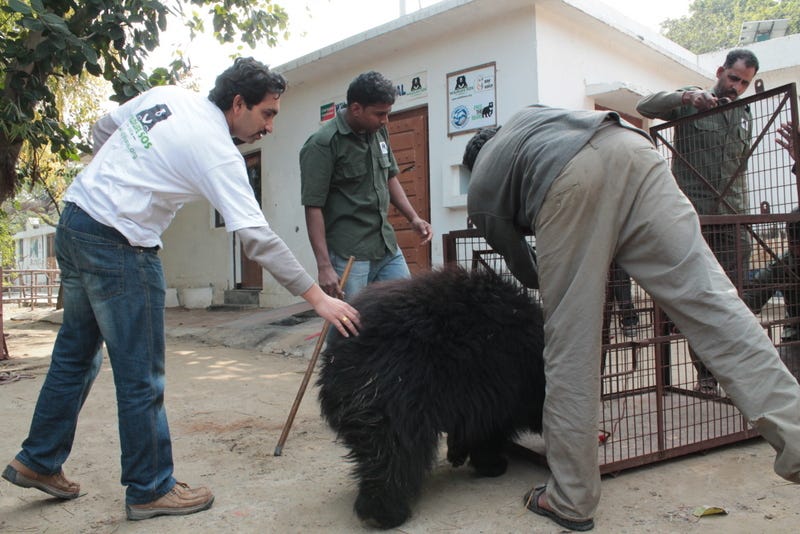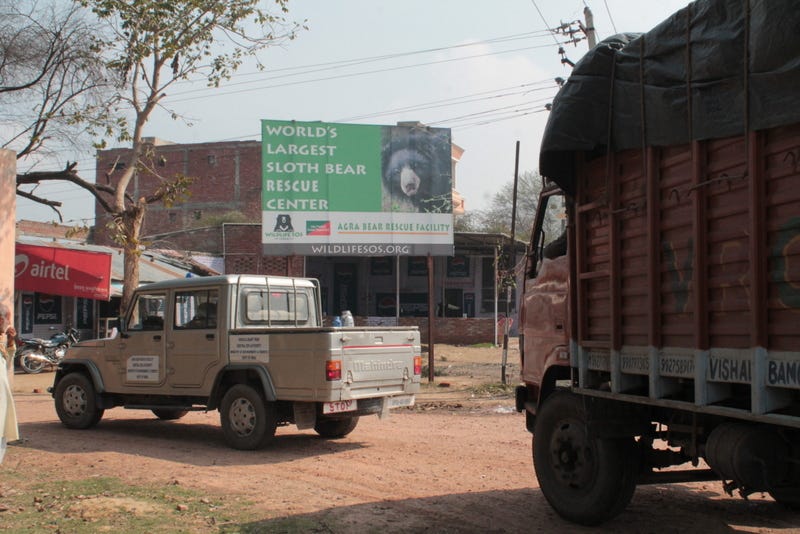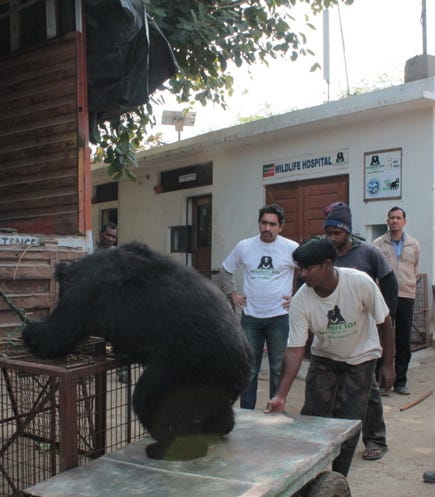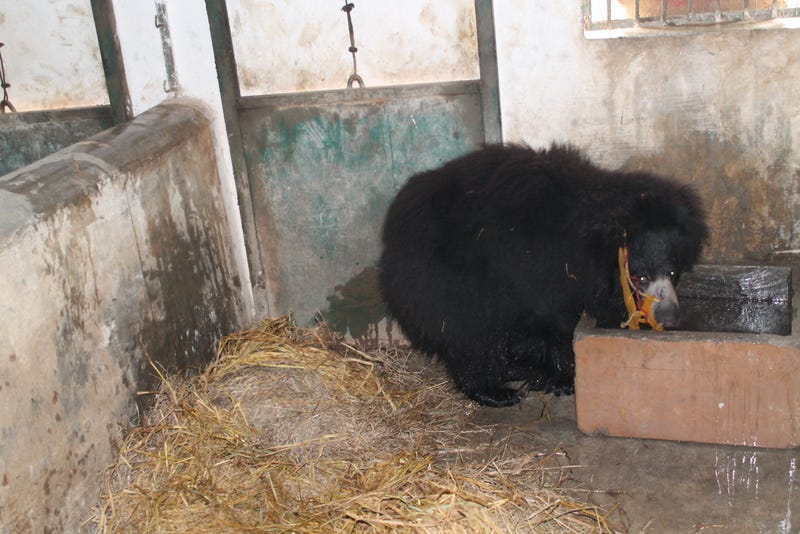By Jordan Schaul | National Geographic | February 19, 2013
Wildlife SOS was called upon to rescue more dancing bears—this time at the Indo-Nepal border. Arrests were made and bears were relocated to a Wildlife SOS Sanctuary. (Full Story)
“In an all-night anti-poaching rescue operation, based on intelligence provided by Wildlife SOS, four young sloth bears were seized from poachers on the Indo-Nepal border. Six persons were arrested by police and the Forest Department in the night-long operation that lasted several hours. The seizure occurred in the Sahibganj district of Jharkhand.
The four male bears rescued were aged between 15 months to 3 years and had been smuggled into India from Nepal by members of the Kalandar tribe.
Wildlife SOS working with the Indian authorities had successfully ended the illegal and brutal practice of Dancing Bears across India with support from our international partners Free the Bears Fund and International Animal Rescue is an effort that started in 1995 and rescued the last dancing bear in 2009.”
—Wildlife SOS, India, USA, UK
Rescued bear gently placed in a transport cage
Truck transporting 4 bears from Indo-Nepal border enters the Wildlife SOS Agra Bear Rehabilitation Center
Bears being unloaded from a truck at the WSOS hospital
ABOUT NATIONAL GEOGRAPHIC SOCIETY
The National Geographic Society is a global nonprofit organization that uses the power of science, exploration, education and storytelling to illuminate and protect the wonder of our world. Since 1888, National Geographic has pushed the boundaries of exploration, investing in bold people and transformative ideas, providing more than 14,000 grants for work across all seven continents, reaching 3 million students each year through education offerings, and engaging audiences around the globe through signature experiences, stories and content. To learn more, visit www.nationalgeographic.org or follow us on Instagram, Twitter and Facebook.
MEET THE AUTHOR
Jordan Carlton SchaulWith training in wildlife ecology, conservation medicine, and comparative psychology, Dr. Schaul's contributions to Nat Geo Voices have covered a range of environmental and social topics. He draws particular attention to the plight of imperiled species highlighting issues at the juncture or nexus of sorta situ wildlife conservation and applied animal welfare. Sorta situ conservation practices are comprised of scientific management and stewardship of animal populations ex situ (in captivity / 'in human care') and in situ (free-ranging / 'in nature'). He also has a background in behavior management and training of companion animals and captive wildlife and conservation marketing and digital publicity. Jordan has shared interviews with colleagues and public figures, as well as editorial news content. In addition, he has posted narratives describing his own work, which include the following examples: • Restoration of wood bison to the Interior of Alaska (As Animal Curator at Alaska Wildlife Conservation Center and courtesy professor at the University of Alaska) • Rehabilitation of orphaned sloth bears exploited for tourists in South Asia (As executive consultant 'in-residence' at the Agra Bear Rescue Center managed by Wildlife SOS) • Censusing small wild cat (e.g. ocelot and margay) populations in the montane cloud forests of Costa Rica for popular publications with 'The Cat Whisperer' Mieshelle Nagelschneider • Evaluating the impact of ecotourism on marine mammal population stability and welfare off the coast of Mexico's Sea of Cortez (With Boston University's marine science program) Jordan was a director on boards of non-profit wildlife conservation organizations serving nations in Africa, North and South America and Southeast Asia. He is also a consultant to a human-wildlife conflict mitigation organization in the Pacific Northwest. Following animal curatorships in Alaska and California, he served as a charter board member of a zoo advocacy and outreach organization and later as its executive director. Jordan was a member of the Communication and Education Commission of the International Union for the Conservation of Nature (CEC-IUCN) and the Bear Specialist Group of the IUCN Species Survival Commission (BSG-SSC-IUCN). He has served on the advisory council of the National Wildlife Humane Society and in service to the Bear Taxon Advisory Group of the Association of Zoos and Aquariums (AZA Bear TAG). In addition, he was an ex officio member of the council of the International Association for Bear Research and Management.






